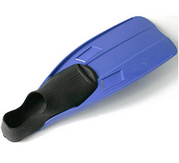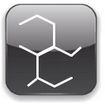SEBS
Thermoplastics > Styrenics

| SEBS Elastomer | ||||||||
| Products range - XPRENE EB | ||||||||
| SEBS Styrene-ethylene-butylene-styrene In Mexpolimeros offer a vast range SEBS resin and compounds developed according to their needs, guaranteeing the quality of products and service. Our product range includes grades compounds block copolymer SEBS, SEPS and SEEPS are available from 3 ÷ 70 Shore A to 70 Shore D, opaque and transparent. XPRENE EB has been specifically formulated for overmolding one or two shots and develops a chemical bond when injection molded a variety of plastic substrates 2K. XPRENE EB is divided into a wide range of products such as soft touch, expandable, high temperature resistant, low compression set, FR halogen, antistatic, foaming, anti-slip etc. I EB XPRENE thermoplastic elastomers are freely configurable flow. The EB XPRENE class consists of products that can replace natural rubber TPV (thermoplastic vulcanizate). |  | |||||||
| SEBS Styrene-ethylene-butylene-styrene | ||||||||
SEBS resin is a block copolymer of styrene base and butadiene elastomer, also known as Styrene-Ethylene / Butylene-Styrene (SEBS), thermoplastic elastomers, in which the elastomeric phase is modified by hydrogenation. The hydrogenation of an SBS rubber leads to the formation of an elastomeric segment in which the alternative ethylene units with the units of which butyleneiche name SEBS. Thanks to the absence of the double bond, XPRENE EB, have an excellent resistance to oxidation and can be added with plasticizers and fillers. SEBS polymer belongs to the family of thermoplastic elastomers in which the elastic phase is constituted by the rubber of SEBS (styrene-ethylene-butylene-styrene), and the plastic phase is generally of an elastomeric polyolefin phase. Due to its structure and behavior thermoplastic elastomers are located between plastics (SEBS thermoplastics) and rubber (elastomer). The thermoplastic SEBS combine the typical advantages of rubber and plastic materials. The products included in this class are compatible with polypropylene and are used for overmolding and extrusion. Its resistance to ultraviolet rays (due to its chemical nature SEBS rubber (is saturated), and devoid of double bonds, this makes XPRENE EB is particularly resistant to the action of UV rays and weathering), then makes them the ideal option for outdoor applications that require a high resistance to oxidizing agents. |  | |||||||
Symbols | ||||||||
| | |||||||
| SEBS Properties | ||||||||
|  | |||||||
| SEBS structure | ||||||||
Since the rubber blocks and hard polystyrene are incompatible, a strong phase separation results in the formation of polystyrene domains. These domains act as physical cross and can rupture and reset by a combination of shear and temperature links. The amount of shear required to process SBC depends on molecular weight of polystyrene (Mw) and the type of rubber midblock. Styrene-ethylene-butylene-styrene (SEBS) SBCs are usually not hydrogenated his predecessors strongest domains. |  | |||||||
| SEBS Physical and mechanical properties | ||||||||
Elastomers of styrenic block copolymers SEBS polymers are among the most versatile and easy to process in the plastics material. The EB XPRENE a very good coefficient of surface friction, low permanent deformation, a tensile strength. Normally they do not require drying, have broad processing latitude and have good to excellent thermal stability. Most commercial TPE can be processed by a variety of techniques. In addition, there are many degrees of specialty formulated to suit particular processes. Other features of the SEBS polymerThey include neutral base color, resistance to aging and UV radiation, the compression set and approval for food contact. The special qualities with specific acoustic properties, modified adhesion, heat stability and flame retardancy complete the current product range. | ||||||||
SEBS Propiedades Termicas | ||||||||
| The glass transition temperature (Tg) of the polybutadiene blocks is typically -90 ° C, while the Tg of the polystyrene blocks is + 100 ° C. Therefore, at any temperature between -90 ° C and + 100 ° C, SEBS act as an elastomer physically crosslinked. The operating temperature is guaranteed from -40 ° C to + 100 ° C. | ||||||||
| SEBS Electrical properties | ||||||||
SEBS are typically good insulators with high relative electrical resistivity being nonpolar polar best. However, the electrical properties of the compounds of XPRENE EB are more dependent on the ingredients used in the formulation of the elastomer base. We antistatic compound SEBS and even conductive by the incorporation of sufficient amounts of graphite, special types of carbon black, certain metal powders or polar products in the rubber mixture. However, the conductivity obtained by these means does not resemble that of metals. | ||||||||
| SEBS Optical properties | ||||||||
| One of the features of a two-phase system is that light is scattered when passing from one phase to another, resulting in different levels of transmission of light, in the case of SEBS also have transparent degrees. | ||||||||
| SEBS Chemical resistance | ||||||||
Unlike SBS, SEBS contains no double bonds (which by nature are sensitive to oxidation), which makes it particularly resistant to wear. Therefore, it is ideal for extreme conditions having to do with heat, ultraviolet radiation, ozone or oxidizing agents. SEBS well resist stress crack (stress cracking) acid, hydroxides, methanol and ethanol, absorb oil, fats, aliphatic hydrocarbons. Instead they not resist polar hydrocarbons, aromatic hydrocarbons, carboxylic acid, gasoline, oil ASTM No 1 Paraffin, ASTM # 3 oil Aromatic, toluene and benzene. | ||||||||
| SEBS Processability | ||||||||
The SEBS belong to the class of thermoplastic elastomers having the mechanical properties of rubber at room temperature and thermoplastic processing capabilities. The SEBS are rubbery without being crosslinked, so it is easy to process to achieve useful forms, usualente is processed more or less at 150-230 ° C. L os Sebss may have different characteristics, mainly highlighting its versatility for bi-injection molding or plastic materials. They can be processed with various methods such as injection molding, extrusion or blowing. In addition, XPRENE EB has been specially created for marketing demands and meet customer requirements. | ||||||||
| Overmolding - 2K - Co-extrusion | ||||||||
Adhesion to a wide range of polar and nonpolar substrates such as PP, PA, ABS, PC, PS, SAN, ASA, PBT, PET, ABS / PC etc. For the selection process overmolding in certain TPEs can vary the strength of binding in the application, for example if the molding process is chosen for multi shot (multi-shot) compared to the insert molding, the first promotes certain greater bonding force or binding because the two materials melt upon binding, while the second gives a poor bond since one of the two materials (plastic) is superimposed on the other that is not cast (metal). So the selection process to be applied is a key to produce a high quality factor.Within the choice of material depends on the company and product handling, where one has to consider the characteristics of each material for the application of overmolded, as there are a variety of materials having different properties that provide softness, texture, adhesion, and wall thickness of the material. For the effect of the thickness it is necessary to know the hardness of the material, for example when it has a TPE material with a low thickness (typically> 1mm) is perceived harder and vice versa when there is more than 1mm thickness will feel smooth. To ensure a good link overmolding their searches a thickness in the range 1.5mm for most applications overmolding. |  | |||||||
| SEBS Compound | ||||||||
The products of the XPRENE EB class are formulated from SEBS, oil, polypropylene, additives, and some grades have reinforcements of a continuous phase morphology. The inclusion of a charge to a polymeric matrix can describe a compatibilization effect between immiscible or immiscible mixtures and thus also exhibit excellent electrical conductivity, hardness, rigidity, mechanical and thermal resistance, and even to provide bactericidal properties to the new material. Polymer melt mixing has been the fast track for the design of new resins that seek to combine the properties of SEBS and PP, to reach the superiority of certain characteristics due to the synergy that can present. Unlike SBS, SEBS pellets do not contain double bonds (which by their nature are sensitive to oxidation), which makes them particularly resistant to wear. |  | |||||||
| SEBS good alternative PVC | ||||||||
However, there are two main drivers in the search for alternative PVC. First, plasticized PVC has an undesired related to the release of dioxins when incinerated uncontrolled environmental impact. Secondly, there is concern that plasticizers of PVC (called "estrogen mimics") can migrate to the human body. Potential alternative plasticized PVC tubes are polymer compositions containing polypropylene (PP) combined with a copolymer of elastomeric blocks. These compositions do not contain "estrogen mimics" or release dioxins when incinerated.SBCs are thermoplastic elastomers consisting of polystyrene end blocks (PS) chemically linked by a connecting rubber block PB. The rubber intermediate block consists most frequently PB polybutadiene, polyisoprene IR or hydrogenated versions poly-olefin: ethylene-butylene and ethylene-propylene SEEPS.Styrene butylene styrene ethylene, also known as SEBS, is a form of thermoplastic elastomer, styrene added. SEBS elastomer is a hydrogenated, with properties such as high strength, good heat resistance and flexibility. There are other advantages, such as resistance to UV and ozone, high dispersibility, thermooxidative stability, excellent processing capabilities, the broad compatibility of the tackifiers, high capacity oil absorption and stability in processing at high temperature, which allow SEBS for multiple applications in various industries end use.A new family of hydrogenated SBC appears to be closing the performance gap with plasticized PVC. This family is based on midblock segment improved rubber (ERS), containing a higher content than more traditional butylene midblock SEBS. The benefits of ERS-SEBS polymers include improved processability and better compatibility with polypropylene. The fine network of ERS-SEBS mixture leads to a significant improvement in transparency. Another effect of improved compatibility with PP is a broadening of the glass transition temperature (Tg) below room temperature. The improved compatibility opens a number of properties of the material, which makes the SBC-PP mixtures are very suitable for replacement of plasticized PVC.Binding to these new materials can be challenging due to lack of bondable molecules along the polymer surface. A light curable adhesive provides high adhesion to all the various components. | ||||||||
| Replace PVC | ||||||||
SEBS is used as a possible replacement of PVC in the manufacture of toys. SEBS is similar to natural rubber and is less dangerous compared to their counterparts. FDA approvals and BGW for implementing SEBS can create an opportunity for growth for the product in the global market. The styrene polymer SEBS styrene used as the central building block, and has favorable properties, such as improved impact resistance, flow, rigidity, low temperature, thermal stability and durability. SEBS is now replacing PVC, due to its greater structural retention, dimensional integrity and chemical compatibility. In addition, SEBS, being free of phthalates and environmentally friendly, can replace the application of PVC in multiple industries.SEBS has been replacing the application of PVC in industries such as medical, pharmaceutical, adhesives and sealants, cables and wires, building materials, cosmetics and personal care, agriculture, packaging, footwear, furniture, clothing, toys, sports and electronic items. Using SEBS gadgets granules is increasing in the manufacture of medical devices, tubes and bags, as it is biocompatible and comparatively environmentally friendly than PVC. |  | |||||||
Applications | ||||||||
This advanced development of SEBS elastomer keeps the characteristics extremely soft and similar to rubber, but at the same time incorporates an improvement in terms of weather resistance, temperature and chemistry. Typical applications are profiles, household items, handles, knives, handles, accessories, feet, storage, non-slip inserts, knobs, buttons, seals, profiles, pedal covers, power tools, cable seals , refrigerator seals, plugs and sockets, cable liners, switches, enclosures, garden tools, knobs, foamed fittings, bottle caps, foamed seals, foam or expanded caps approved by FDA, high quality bed bases, construction in exterior, the mouthparts and the cosmetic sector, etc. SEBS thermoplastic is an interesting alternative to the TPV since it has the same type of resistance to weathering, dampers, fins, masks, caps, terminals, non-slip and boots. SEBS is already used in the production of toys and can replace PVC for the production of doll heads (with hair) using rotational molding techniques, one of the most difficult PVC substitutions. The SEBS is also used in the electrical industry for items such as flexible cables and can replace PVC. High-performance polymers are often selected for applications that require structural and dimensional integrity retention under exposure to aggressive chemical conditions and elevated temperatures. One of these options for cost-effective performance polymers is plasticized PVC. However, much attention has been paid to the evaluation of more environmentally friendly and biological polymers. Styrene-ethylenebutylene-styrene copolymer rubbers (SEBS), mixtures of SEBS / polypropylene, TPE (thermoplastic elastomers) and polypropylenes are emerging as high-performance alternatives. In particular, TPEs are used to replace low durometer plasticized PVC in medical device applications, where biocompatibility characteristics are crucial. However, adhesive bonding to these polymers can be a challenge. | ||||||||
